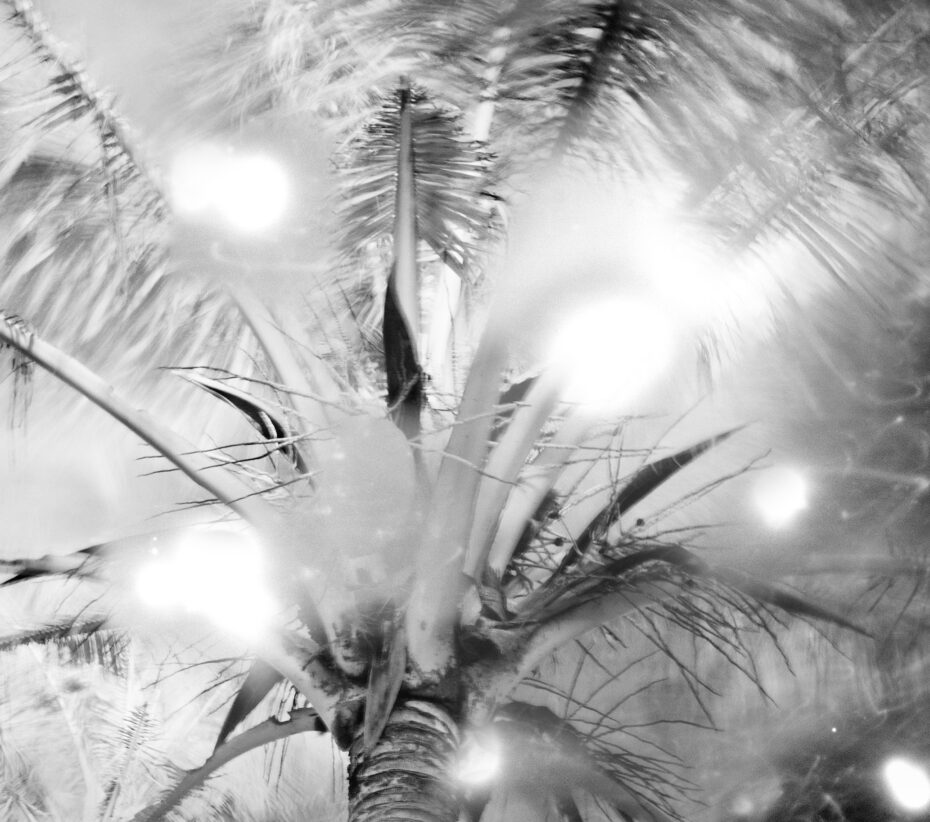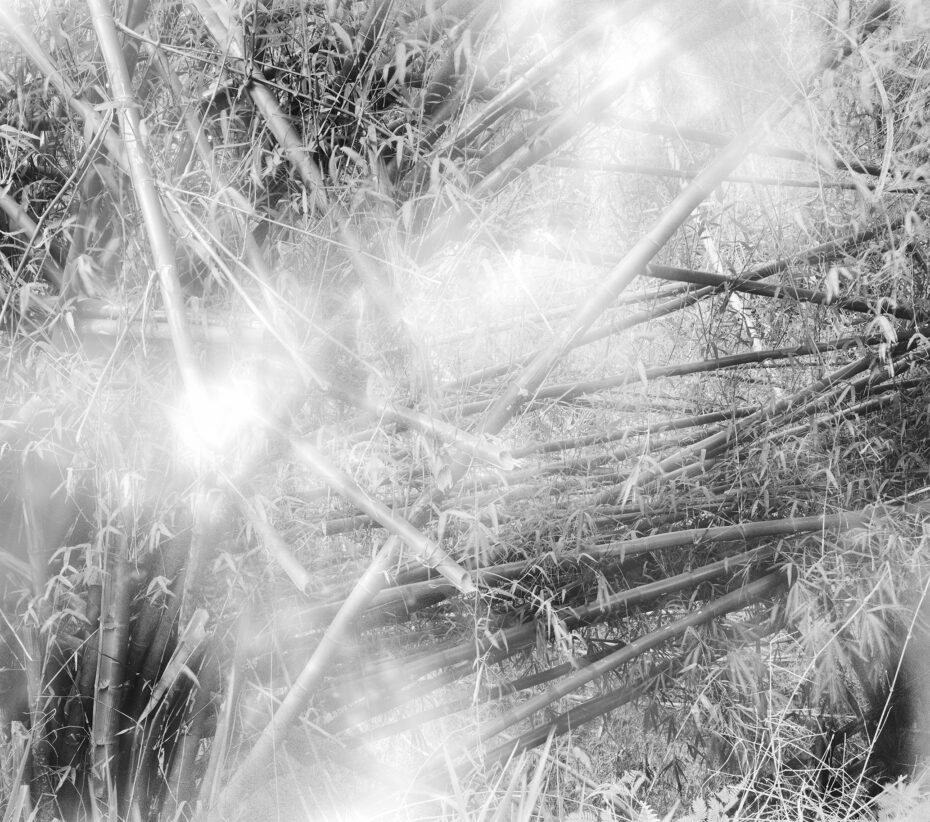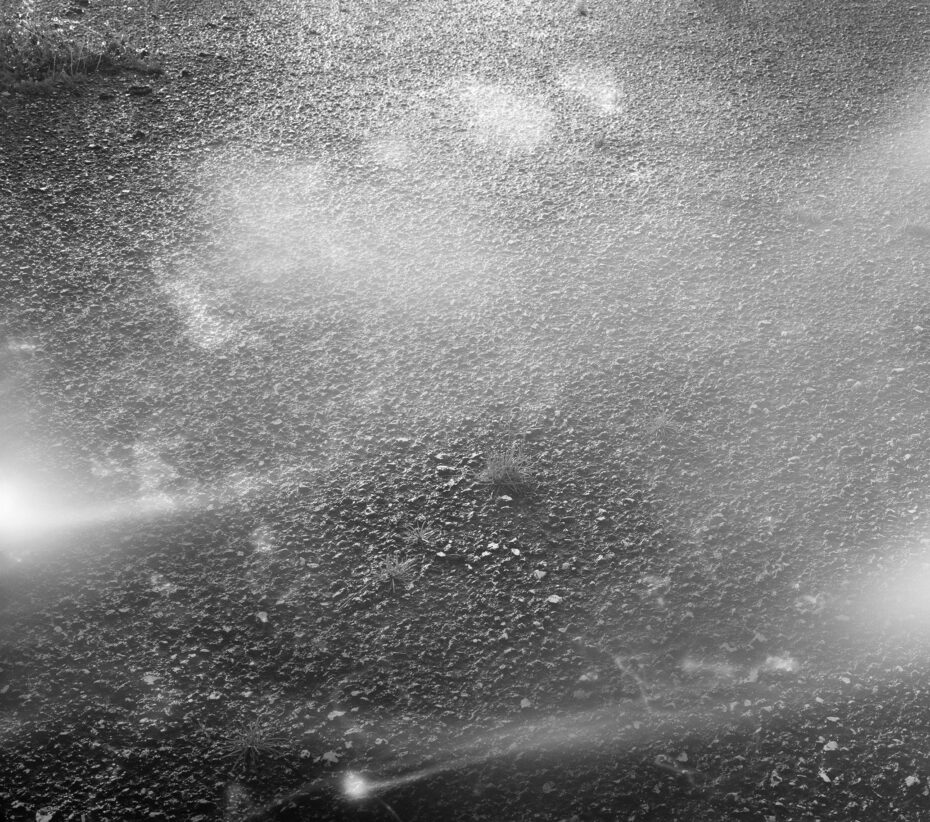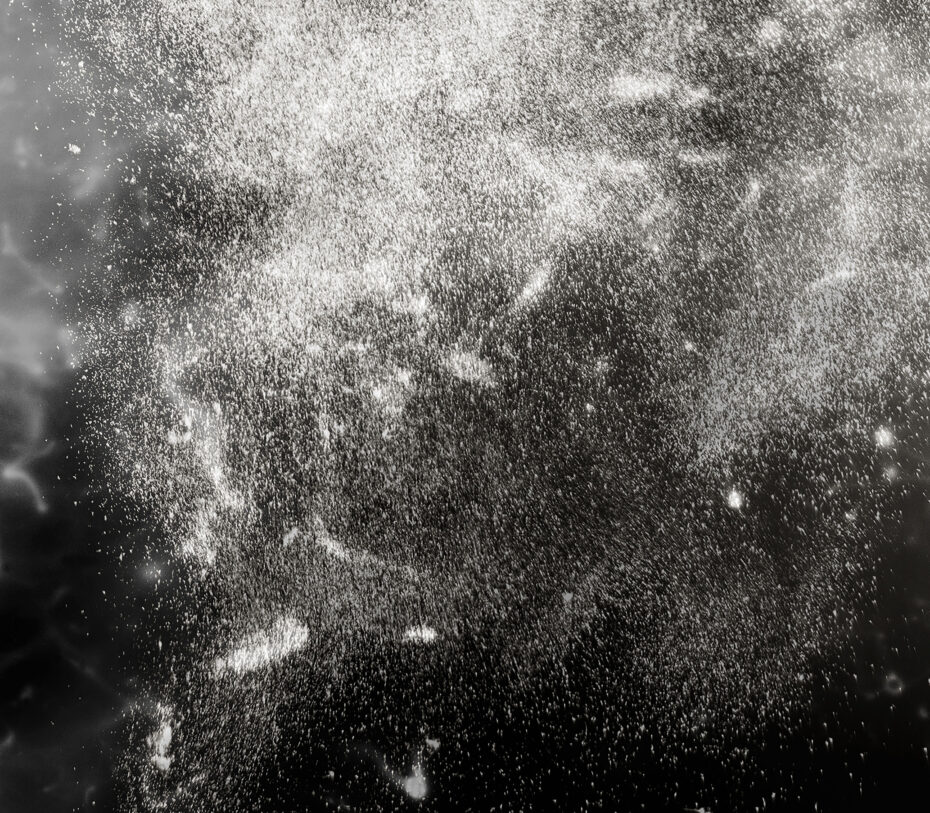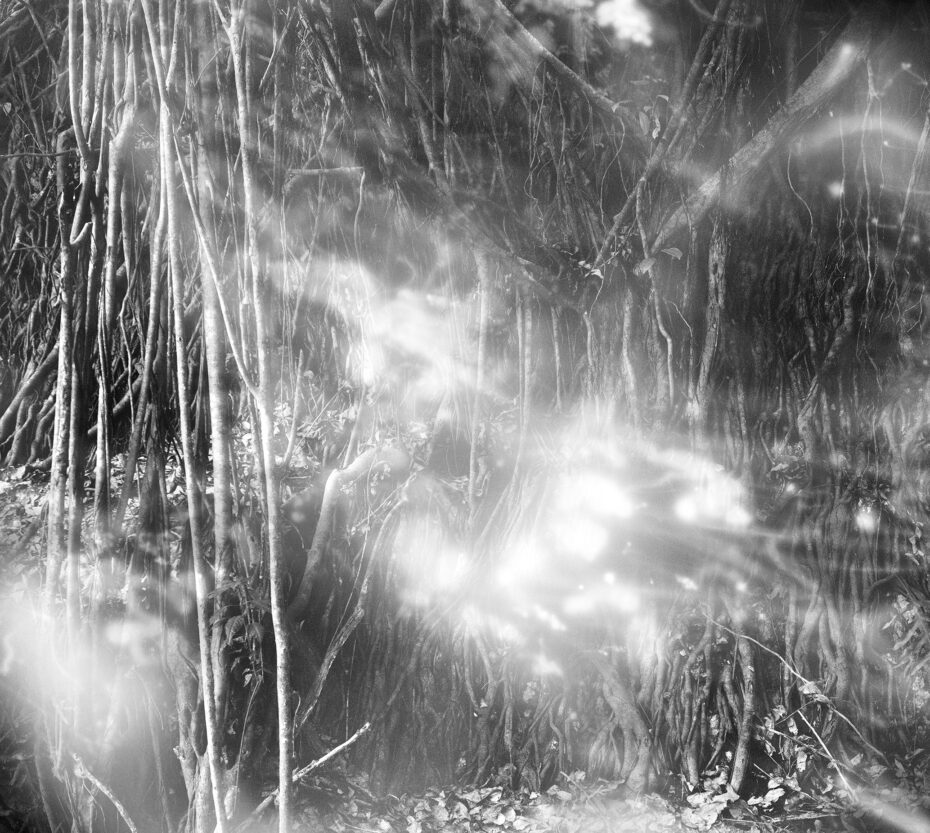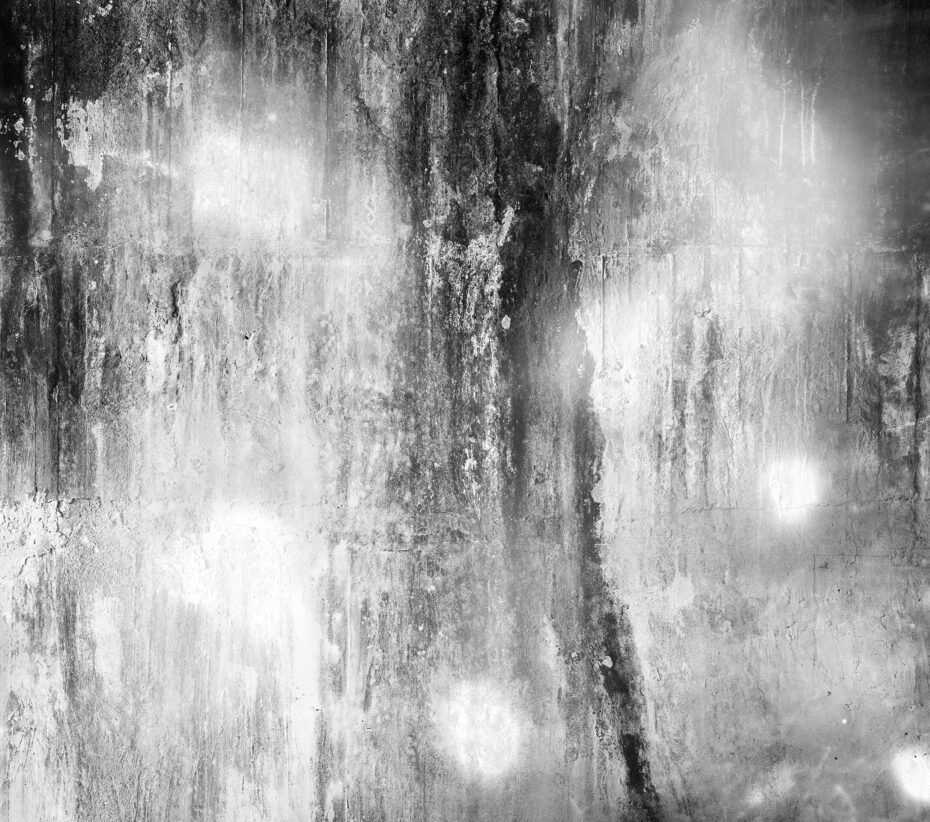Blowing in the Wind
Through photography, filmmaking and storytelling, Blowing in the Wind establishes relationships between the development of nuclear weapons, militarisation, living and non-living consciousnesses. It attempts to build a conversation that focuses on ideas of latency as connected to images; to radiation; to voices; to future warfare; to other-worldly sapience; to human and nonhuman entities.
For fifty years (1946-96), Britain, France and the USA conducted 300 plus nuclear tests across unceded parts of Moana-Oceania. This Cold War era testing, with their ever increasingly larger yields, caused the distribution of dangerously high levels of ionising radiation across lands, oceans and people throughout Moana-Oceania and beyond. These tests, along with detonations throughout unceded parts of African, Asian, and North American continents, has resulted in the absorption of “radioactive isotopes of carbon, cesium, strontium, and plutonium” by all post-World War Two humans, plants, and oceans across the planet.[1] In addition, nuclear waste from ongoing militarisation and powerplant accidents, further adds to this contamination, especially within a Moana-Oceanic context. Blowing in the Wind responds to this context, and explores how to image that which has been made invisible, namely the racist-imperialist ideologies that drive militarisation, as well as that which has no literal image, meaning radiation. The project’s title alludes to the idea of a ‘downwinder’—a person or community exposed to radioactive materials that are released into the environment which, in this case, quite literally float downwind, contaminating bodies, lands, waters, and air. The resulting artworks privilege opacity and invisibility meaning their visuality is not necessarily obviously ‘nuclear’. There is a focus on how a lens can establish and hold accountable reparative connections that recognise the tensions of what it means to live within islands and oceans contaminated by both nuclear fallout and ongoing militarisation. The central ideas of this project involve questioning how to socio-ethically image and bear witness to this history which infuses present-day reality. There is a focus on transgenerational justice concerning this history and the ongoing quest for nuclear atonement.
Project Artworks:
The artworks’ focus on ideas of visibility and invisibility are explored by experimenting with how the material and indexical properties of film may be utilised to visualise the invisible properties of radiation poisoning. They use these properties to work with something as abstract and pervasive as radiation. Specifically, a series of seven photographs focus on Guåhan (Guam)—who is fighting for compensation regarding exposure to downwind radiation caused by US testing in the Marshall Islands—and Tinian, which was the departure point for the first, and only, nuclear weapons used in combat. Both islands are present-day territories of the US and as such are subject to ongoing US militarisation. They have been developed using salt water collected from Melesso’ Pier in Southern Guåhan. Visibly opposite this pier is Cocos Lagoon where Cold War era radioactive military hardware was taken for decontamination after US testing in the Marshall Islands. This water has a trace residue of radiation which has effectively fogged the light-sensitive film. In addition, during the film development, chemiluminescence has been added which further impacts the image embedded in the film’s light-sensitive emulsion. Chemiluminescence is a chemical process used in ‘Western Blot’ DNA testing. In this context, chemiluminescence damages the film by creating white spots of fogging that prevent visibility of the initial photographed image. This process is akin to how radiation resides in the body’s DNA damaging it over time. As such, these photographs embody a material connection to what remains invisible to human senses, meaning radiation residue both inside and outside of the body.
The moving image component (currently in production) encompasses are series of interrelated experimental films that function as a three-channel video project. The films bring together present-day footage from Tinian Island (American and Japanese military infrastructure from World War Two), Hiroshima (‘survivor trees’ close to the hypocentre) and Ishigaki (seaweed farming), with declassified US produced archival footage that focuses on nuclear weapons manufacturing and ‘flash-burns’; the permanent shadows created by objects and bodies exposed to an atomic bomb’s intense flash and high temperatures. This imagery is suggestive of the invisible radiation that floated downwind and poisoned people, animals, lands and infrastructure across Moana-Oceania. Three voices shift across these different image registers using modalities that function as a kind of call and response; they speak to each other. Two of these voices belong to Deborah Fleming (from the Tinian Women’s Association, who are an activist group fighting US military presence on the island) and an anti-war activist and survivor of the Hiroshima atomic bombing. While these two voices tell stories about what it is like to survive a nuclear weapon and what it is like to live in a place being readied for war, the third voice is non-narrative driven. It is performed by Aotearoa based rakugo (form of Japanese storytelling) practitioner Kanariya Eishi who uses an array of Japanese onomatopoeia to expresses human and nonhuman entities, as well as living and non-living consciousnesses associated with these contexts. These sounds are sensory-rich and evoke feelings of other-worldly sapience.
_____________
[1] Welsome, Eileen. The Plutonium Files: America’s Secret Medical Experiments in the Cold War. New York: Dial, 1999, pg 489.
Series Information
- Year: 2023-2025
- Dimension: Variable
- Medium: Photography and Moving Image
